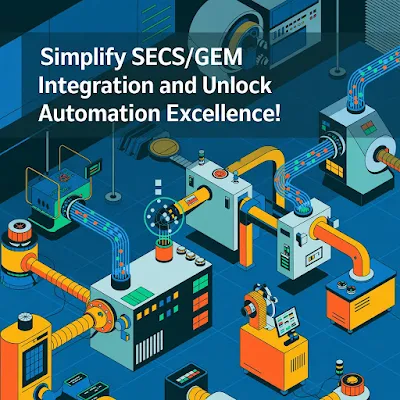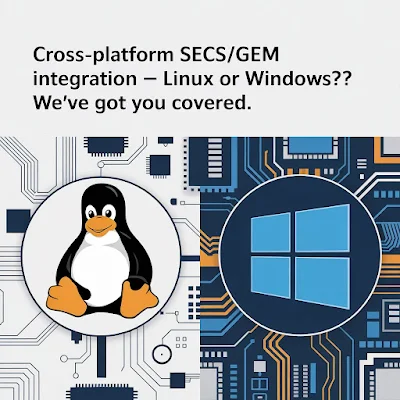The semiconductor industry depends on seamless communication between factory equipment and host systems to ensure productivity, traceability, and quality. One of the most widely adopted standards that enables this communication is the SECS/GEM protocol. It defines how manufacturing tools exchange data, status updates, and control commands with the host computer in a semiconductor factory.
Many equipment manufacturers and fabs rely on SECS/GEM protocol implementation to modernize their legacy equipment and achieve full automation. As semiconductor production becomes increasingly complex, finding the right service provider for SECS/GEM protocol implementation for semiconductor factories is essential to improve interoperability, throughput, and efficiency.
Understanding the SECS/GEM Protocol
The SECS/GEM protocol (SEMI Equipment Communication Standard / Generic Equipment Model) is a communication standard defined by SEMI (Semiconductor Equipment and Materials International). It provides a standardized way for manufacturing tools to connect with factory host systems.
This protocol enables data collection, equipment control, alarm reporting, recipe management, and remote diagnostics. Whether it’s a wafer processing machine, metrology system, or packaging tool, SECS/GEM ensures each piece of equipment “speaks the same language” for consistent data exchange.
Several tools like SECS/GEM simulators and SECS GEM drivers are used during integration to test communication and verify compliance before actual deployment. A well-documented SECS GEM manual also helps engineers implement the communication layer smoothly and ensure that equipment adheres to SEMI standards like E4 (SECS-I), E5 (SECS-II), and E30 (GEM).
Why SECS/GEM Protocol Implementation Matters
Modern semiconductor fabs rely heavily on automation. Without proper SECS/GEM protocol implementation, equipment integration can become a bottleneck. Here’s why it’s critical:
- Unified communication: Every tool communicates via the same standard, enabling easier monitoring and control.
- Reduced downtime: Real-time data through SECS communication allows engineers to predict failures and respond faster.
- Improved traceability: With consistent data collection, manufacturers can track process parameters and improve yield.
- Compliance and scalability: Adhering to GEM/SECS standards ensures that your equipment remains compatible with new factory systems.
More Blog Post:
- Streamlining Semiconductor Manufacturing with Turnkey SECS/GEM Integration Solutions
- How SECS/GEM Protocol Powers Modern Equipment Communication and Automation
- How does SECS/GEM enhance interoperability between different manufacturing equipment?
- How has SECS/GEM been adapted for use in industries beyond semiconductor manufacturing?



